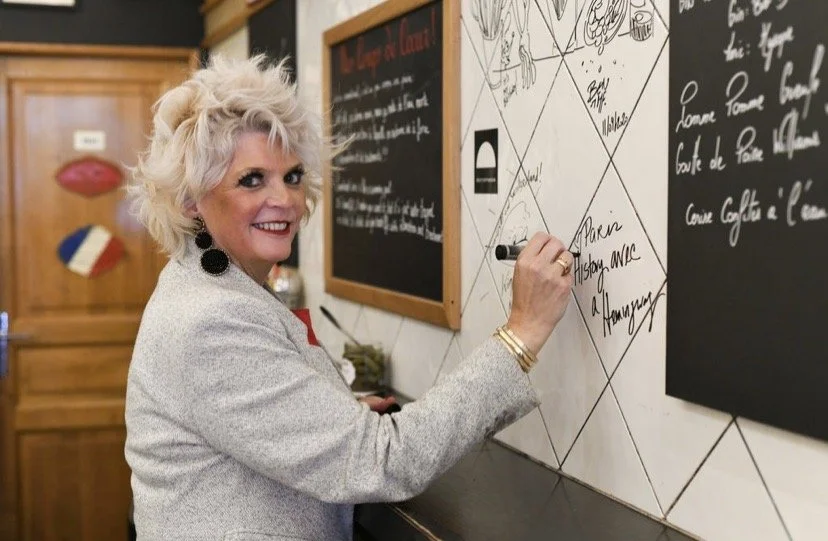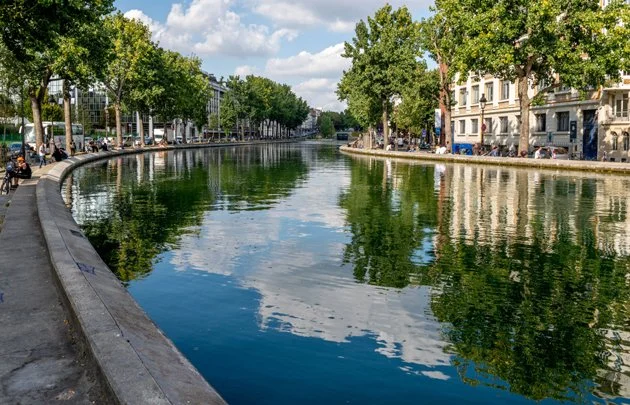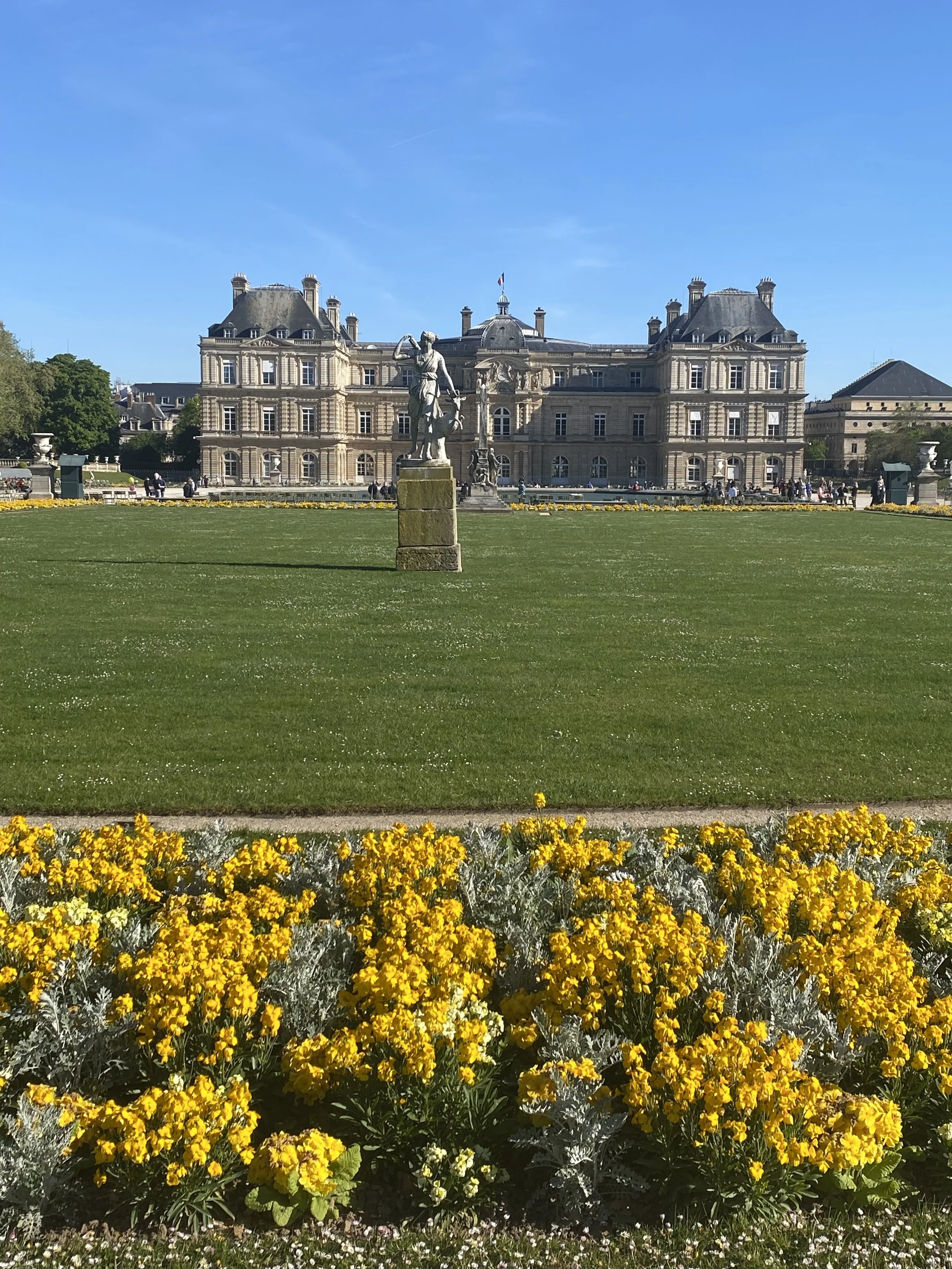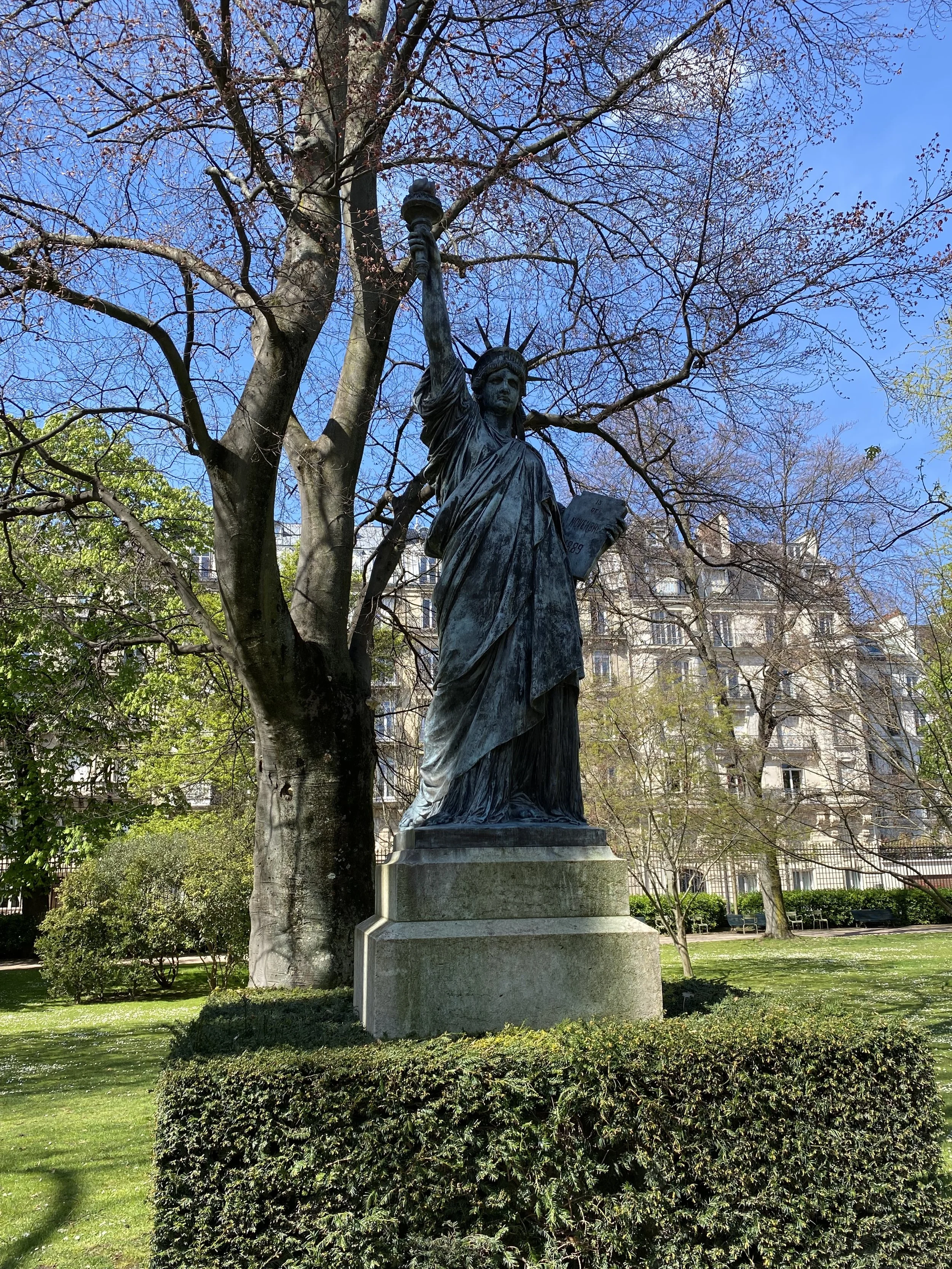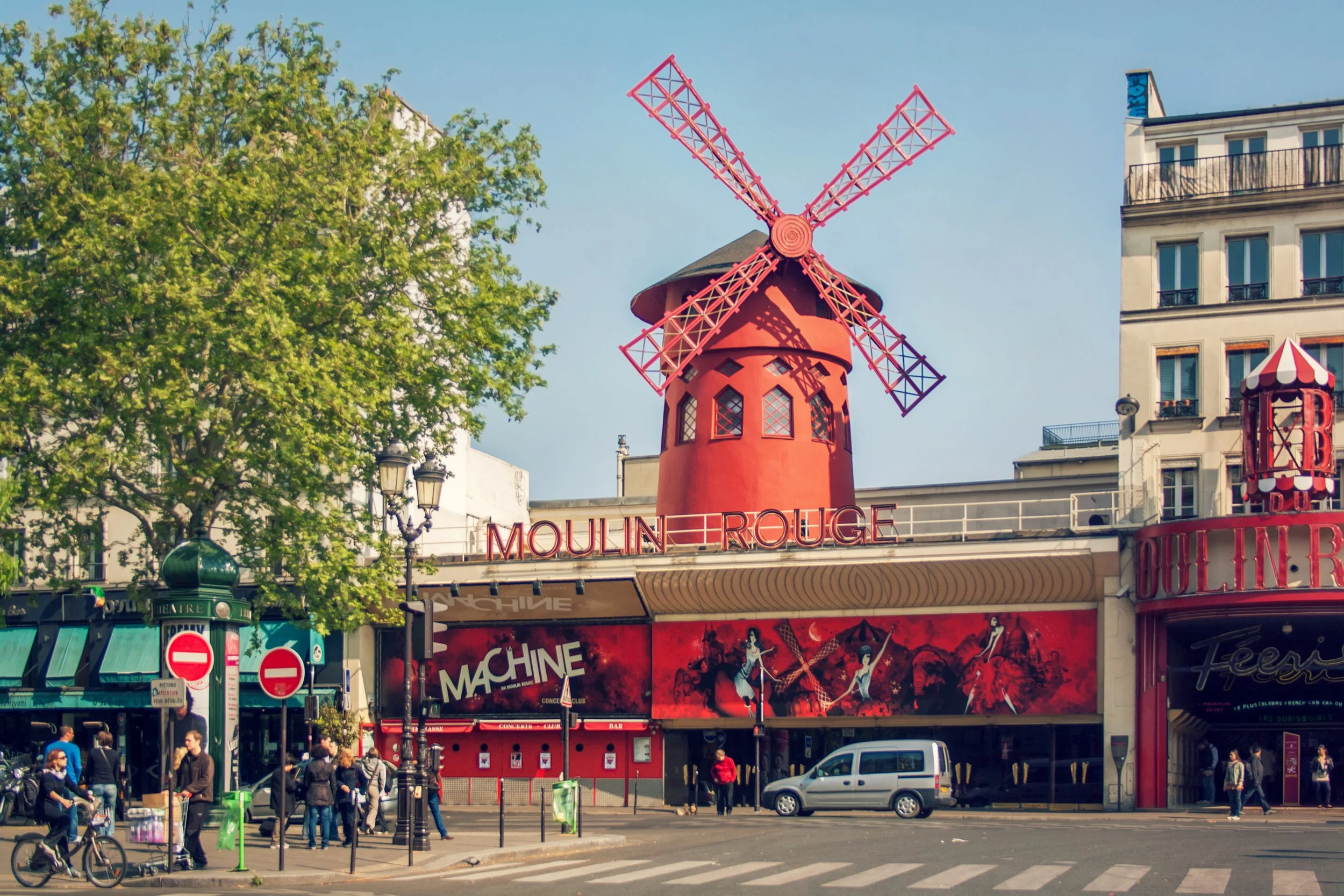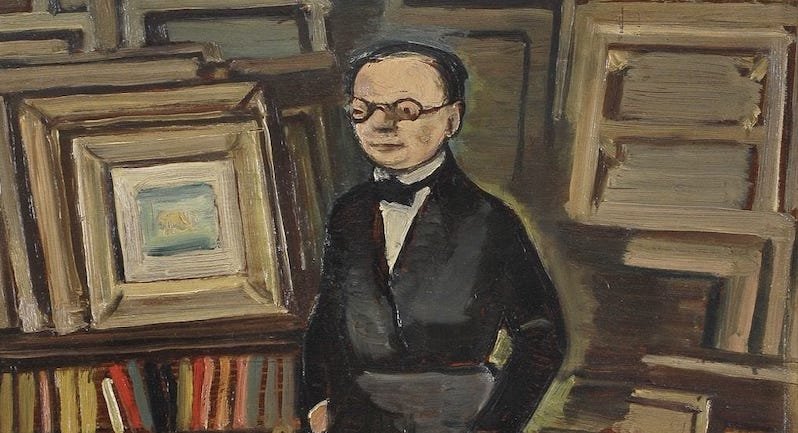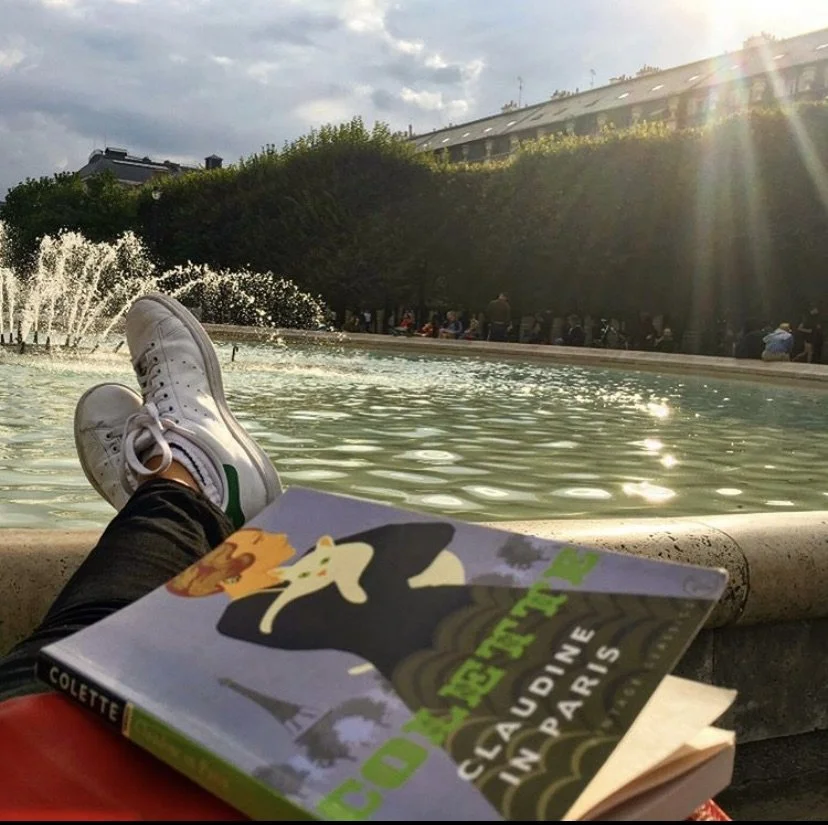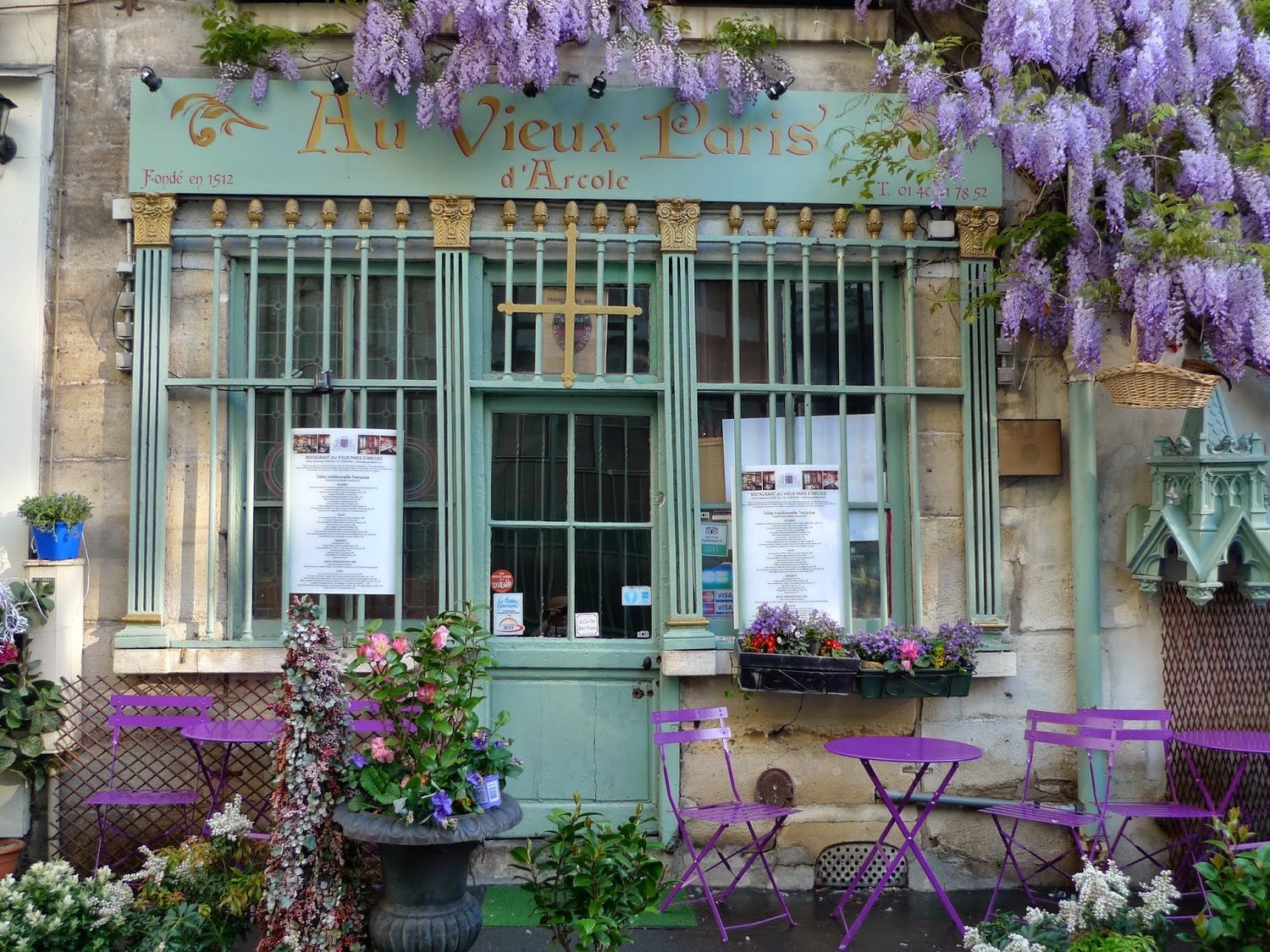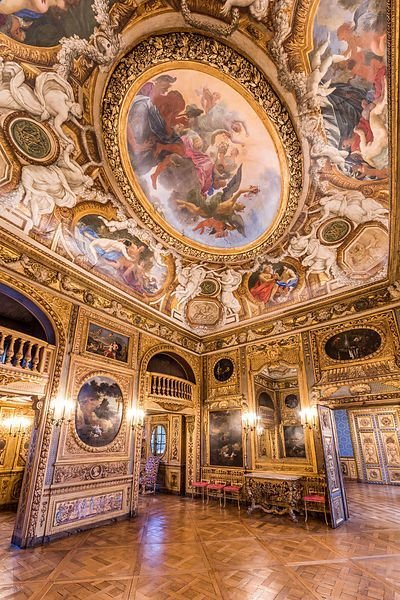Today we started at the lovely Église Saint Laurent at 68 Boulevard de Magenta in the shadows of the Gare de l’Est. Once the north-south axis on the Roman road of the 1st century. It also served as part of the pilgrimage road of the Saint-Denis faithful.
A church has stood on this spot dedicated to Saint Laurent since the 6th century. The first church was destroyed by the Normans in 885. The next church built in 1180 was too small and led to the current church dating back to around 1429. It had an Italian Gothic facade much like last week’s Sainte Elisabeth de Hongrie. U9nder Haussmann, when the Boulevards Magenta and Strasbourg intersected, the facade was destroyed. Simon Claude Constant-Defeux designed the flamboyant Gothic facade in 1863 and the lead spire.
The tympan over the door by Paul Balzac in 1870 is amazing and very different from most churches. The stained glass inside was created over time by Ernest Lami de Nozan and also Pierre Gaudin, son of Jean Gaudin whose stained glass designs can be found around France.
In 1768, Jean Bécu married Guillaume du Barry so she could be accepted into the court of Louis XV and his official mistress. Madame du Barry became the chief rival of Marie Antoinette and ended her life kicking and screaming to the guillotine.
It was also the former burial site of the family Sanson. The family business of the Sanson including Charles-Henri was that of executioners. Charles-Henri dropped the blade on over 2,500 hundred people including Louis XVI and Marie Antoinette. Her last words, “Excusez-moi monsieur, je ne voulais pas” were spoken to the Charles Henri Sanson. The family was later moved to Montparnasse cemetery.
Between the church and the Jardin Villemin was the convent of the Récollets. Made up of the 15th-century Franciscan order. A monastery was first here in January of 1604 and enlarged by Marie de Medici in August 1614. It survived until just before the Revolution in 1790 and in 1802 became the Hospice of the Incurables-Hommes and eventually the St Martin military hospital and serviced many of the victims of the Prussian war and WWI. During WWI Big Bertha dropped a shell here and struck the church.
Walking down the Rue des Récollets is the former grand entrance de l' Hôpital Militaire Villemin. The 18th-century building remains on the edge of the garden and is now the artist’s atelier.
Jardin Villemin sits where the Villemin military hospital once stretched over. Named for doctor Jean-Antoine Villemin who had also worked treating men coming back to Paris wounded in the conflicts and wars. The Jardin was created in 1977 and has expanded over time to twice its size.
Don’t miss the lovely first cast iron water fountain in Paris. Commissioned under an 1846 order to add more fountains to the city and two dozen species to the Rue du Faubourg Saint Martin which is where this one lived until 1977.
Marie Auguste Martin designed this neo-baroque beauty. The child on the top is over two newts and dolphins and looks closely at the cute little turtles. Just above is the signature of the artist. This beauty even predates the other more famous cast iron fountains, the Wallace fountains.
Heading out onto the lower Canal Saint Martin to the Quai de Valmy that was once named the Quai Louis XVIII who died during the time the canal was constructed. The canal is made up of 9 locks and foot and traffic bridges that cross them. Just outside of the garden is the Passerelle Bichat which is also made of cast iron.
Crossing the Bichat on the Quai de Jémmapes that follows the canal is where you will find the Hotel du Nord. Built in 1912, it was purchased by Emile and Louise Dabit in 1923. Their son Eugene lived and worked there each night and took notes.
Eugene Dabit was an accomplished painter before he started to write and even displayed his art at the Salon des Independents in 1927 and 1928. In 1929 he wrote Hotel du Nord, the story centered around a young couple that came to stay at the hotel with a double suicide pact in mind. Things go awry and a prostitute and pimp are also involved. In 1938 it was made into a movie by Marcel Carmé.
The book was very popular and won the Populist Prize and of course, became a well-received and still beloved movie but it is actually the creation of the movie that makes the hotel itself so popular. When Carmé made it they decided not to film a single shot here on the canal but actually recreated an entire lifesize version of this area of the canal including the buildings and even digging an exact size trench to fill with water and also the cast iron bridge. The building was 7 feet deep and sadly nothing remains but because of this novelty at the time, it drew people to the canal to see the real deal.
In 1970 the building was in such a bad state it was going to be demolished and the French
were up in arms and demanded it is saved. In 1989 it was classified as a historic facade and the building was rebuilt and the facade was recreated to the exact specifics.
Today it is a wonderful Mediterranean restaurant and they love to share the story of the movie. You can watch the movie for free online here. It’s all in French but you may still get the gist of the story.
https://www.dailymotion.com/video/x3s07n7
The Canal St Martin was first created under Napoleon Bonaparte in 1802 and finished in 1825. It was needed to bring more water into the city to help ward off disease and also for boats to bring important things like wine and cheese to the big city. It was after all paid for by a tax placed on wine. The area was lined with industrial warehouses and not as many residences. In 1860 part of it was covered and also transformed under Haussmann. The canal ends at the Arsenal and eventually into the Seine and can be traveled on daily tourist boats.
In 2016 a long four-month project of cleaning the canal was undertaken including draining all the water. The amount of bikes, wine bottles, chairs, and tables found is staggering and really disturbing as well.
A walk along the canal on a warm spring or summer day will unfold with lots of people lining the canal laughing and drinking wine, and hopefully not tossing those bottles in the canal anymore. There are a few green spaces like the Square Frederick Lemaitre who was a French actor popular on the Avenue de Crime.
Across the Avenue du Faubourg de Temple is a marker dedicated to the victims of the horrible November 13, 2015, terrorist attacks that took place in the area.
Just past the marker of that horrific event is a lifesize statue of a young lady. La Grisette by Jean-Bernard Descomps was created in 1911 and named for and dedicated to the girls that worked in the nearby laundrette. A Grisette is also the name given to the lower level of young girls that supplemented their small income by turning sexual favors. The dresses they wore while working were a lovely drab shade of grey, gris en Francais, where they get their name. She looks rather sad and lost here at the end of the Square Jules Ferry.
Ferry was the mayor of Paris for a short time after the ousting of Napoleon III. A fierce opponent of the Emperor, he constantly had a target on his back and was almost killed 2 or 3 times. There is also a large monument to him at the end of the Jardin des Tuileries.
In the end, we can see the Bataclan just across the Square May Picqueray. Named in 1920 for Marie Jeanne Picqueray who was born in 1898 and created the anarchist trade unionism paper Le Rédractaire. Published from 1974 until her death in 1983.
Ending at the Eglise Saint Ambroise, the lovely neo-everything church at 71 Boulevard Voltaire. The Neo-Gothic, Romanesque, Byzantine church is a feast for the eyes, and its tall bell towers are equal in size to the grand Notre Dame de Paris. Under the porch above the doors, the allegories of eloquence and theology surround Saint Ambrose. Inside are fantastic stained glass windows and murals of the life of Saint Augustine.

